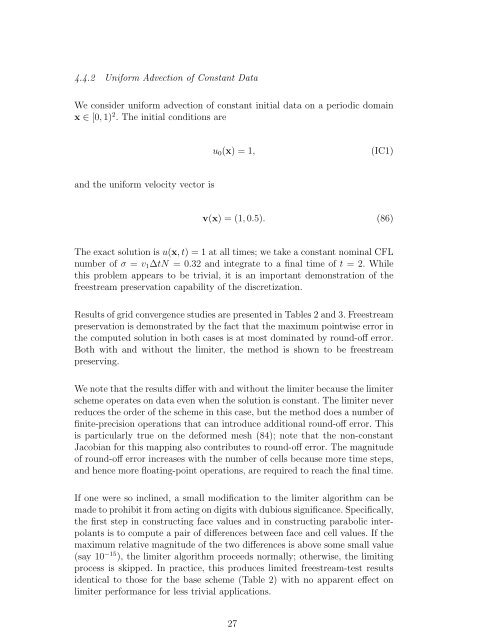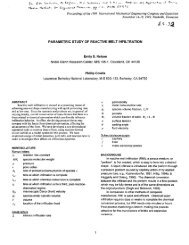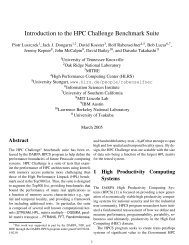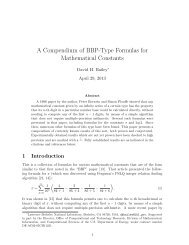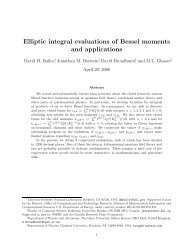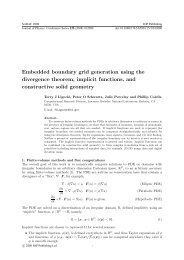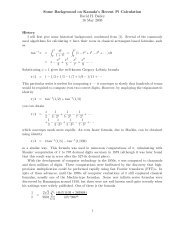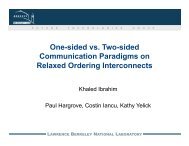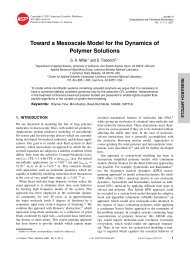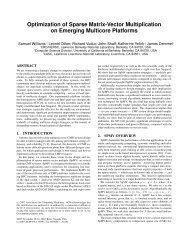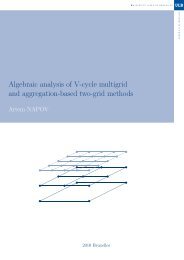High-Order, Finite-Volume Methods in Mapped Coordinates
High-Order, Finite-Volume Methods in Mapped Coordinates
High-Order, Finite-Volume Methods in Mapped Coordinates
Create successful ePaper yourself
Turn your PDF publications into a flip-book with our unique Google optimized e-Paper software.
4.4.2 Uniform Advection of Constant DataWe consider uniform advection of constant <strong>in</strong>itial data on a periodic doma<strong>in</strong>x ∈ [0, 1) 2 . The <strong>in</strong>itial conditions areu 0 (x) = 1,(IC1)and the uniform velocity vector isv(x) = (1, 0.5). (86)The exact solution is u(x, t) = 1 at all times; we take a constant nom<strong>in</strong>al CFLnumber of σ = v 1 ∆tN = 0.32 and <strong>in</strong>tegrate to a f<strong>in</strong>al time of t = 2. Whilethis problem appears to be trivial, it is an important demonstration of thefreestream preservation capability of the discretization.Results of grid convergence studies are presented <strong>in</strong> Tables 2 and 3. Freestreampreservation is demonstrated by the fact that the maximum po<strong>in</strong>twise error <strong>in</strong>the computed solution <strong>in</strong> both cases is at most dom<strong>in</strong>ated by round-off error.Both with and without the limiter, the method is shown to be freestreampreserv<strong>in</strong>g.We note that the results differ with and without the limiter because the limiterscheme operates on data even when the solution is constant. The limiter neverreduces the order of the scheme <strong>in</strong> this case, but the method does a number off<strong>in</strong>ite-precision operations that can <strong>in</strong>troduce additional round-off error. Thisis particularly true on the deformed mesh (84); note that the non-constantJacobian for this mapp<strong>in</strong>g also contributes to round-off error. The magnitudeof round-off error <strong>in</strong>creases with the number of cells because more time steps,and hence more float<strong>in</strong>g-po<strong>in</strong>t operations, are required to reach the f<strong>in</strong>al time.If one were so <strong>in</strong>cl<strong>in</strong>ed, a small modification to the limiter algorithm can bemade to prohibit it from act<strong>in</strong>g on digits with dubious significance. Specifically,the first step <strong>in</strong> construct<strong>in</strong>g face values and <strong>in</strong> construct<strong>in</strong>g parabolic <strong>in</strong>terpolantsis to compute a pair of differences between face and cell values. If themaximum relative magnitude of the two differences is above some small value(say 10 −15 ), the limiter algorithm proceeds normally; otherwise, the limit<strong>in</strong>gprocess is skipped. In practice, this produces limited freestream-test resultsidentical to those for the base scheme (Table 2) with no apparent effect onlimiter performance for less trivial applications.27


